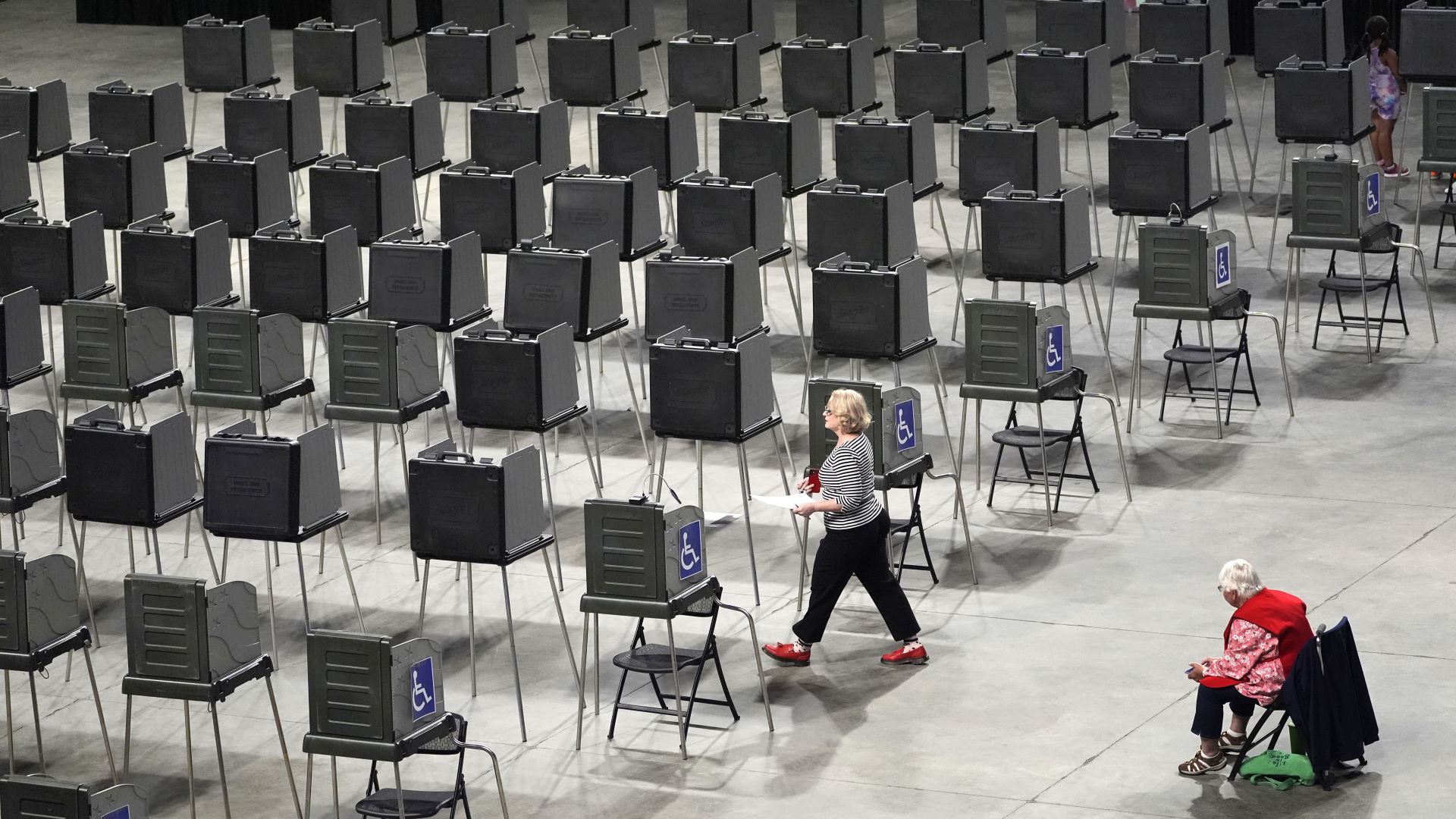An uncommon system of voting could be central to which party controls the U.S. House this fall — or even the presidency.
In Maine and Alaska, voters in competitive congressional districts will elect a winner using ranked choice voting.
Rather than cast a single vote for their preferred candidate, voters rank their choices in order of preference on the ballot. If a candidate is the first choice of more than 50% of voters in the first round of counting, that candidate is the winner.
But if no candidate surpasses 50%, the count continues in round two. The candidate with the fewest votes is eliminated, and voters who chose that candidate as their top pick have their votes redistributed to their next choice.
This continues with the candidate with the fewest votes getting eliminated until someone emerges with a majority of votes.
Ranked choice voting has become more popular in recent years, particularly at the municipal level.
Voters in two dozen cities and counties — from New York and Minneapolis to Boulder, Colorado — used ranked choice voting in 2023, according to FairVote, a nonpartisan organization that advocates for the expansion of ranked choice voting. Seven other cities voted in favor of preserving, adopting or expanding ranked choice voting.
Proponents of ranked choice voting argue the system encourages candidates to build broader coalitions, eliminates the spoiler effect and discourages negative campaigning. Opponents say it’s confusing and can result in a candidate without the largest number of first-choice votes ultimately prevailing.
Because they take place over multiple rounds that are tabulated only once all first-choice votes are counted, elections in Alaska and Maine that advance to ranked choice are often resolved a week or more after Election Day.
Maine
Maine adopted ranked voting in elections in 2016 in a statewide referendum. It is used in all statewide primaries with more than two candidates.
In general elections, it is used for federal offices including the presidency but not in state races, such as for governor or the Legislature, because it runs afoul of the Maine Constitution.
It quickly came into play — twice — in Maine’s 2nd Congressional District. Then-GOP Rep. Bruce Poliquin won the most first choice votes in 2018, but lost to Democratic Rep. Jared Golden when votes were reallocated after removing the third- and fourth-place finishers. The process repeated four years later when Golden beat Poliquin in a rematch.
A federal judge twice upheld the constitutionality of ranked voting in separate challenges by Poliquin in 2018 and a group of voters in 2020.
This year, only two candidates are explicitly on the ballot in the 2nd District — Golden and Republican Austin Theriault — but the race could nonetheless go to ranked choice voting because votes will be counted for a third candidate whose write-in candidacy has been recognized by the state.
If no first-round winner receives a majority of the vote on Election Day, then the ballots are shipped to the state capital, where the ballots are entered into a computer. The process takes about a week before the final tally is run and the winner declared.
Alaska
Alaskans approved the use of ranked choice voting in a 2020 statewide initiative. It is used in all general elections, including for the presidency, but not in state primaries. Alaska’s state primaries are open, so all candidates, regardless of party, run on the same ballot and the top four vote-getters advance to the general election.
Presidential primaries are different. Candidates can make the ballot by winning a recognized party’s primary or successfully petitioning the state Division of Elections. This year, there will be eight presidential tickets on the ballot in Alaska; voters can rank all of them if they choose.
The first use of ranked choice voting — and when it first came into play — was in a 2022 special election for the state’s at-large congressional district. Now-Rep. Mary Peltola, a Democrat, received the most votes in the first round of voting, while two Republican candidates finished second and third. She surpassed 50% of the vote when the third-place candidate was eliminated.
Peltola went on to win the regularly scheduled election, which also used ranked choice voting, later that year. She faces Republican Nick Begich, one of the two candidates she defeated in 2022, and two others in November.
Republican Sen. Lisa Murkowski was reelected in 2022 in a race that went to ranked choice voting.
Alaska will vote next month on a ballot measure that would repeal the state’s new open primary and ranked choice general election system.
The presidency
The more candidates in a race, the more likely it is that candidates will split the vote and nobody will win a majority, advancing the election to ranked choice voting. The presidential ballots in Maine and Alaska will include more than just Democrat Kamala Harris and Republican Donald Trump, so it’s possible those states’ races could wind up going to ranked choice voting.
Maine is one of two states that gives an electoral vote to the winner of each congressional district along with two to the statewide winner, and ranked choice voting could go into effect if no presidential candidate receives a majority in one of the districts.
In 2020, before Alaska’s ranked choice voting was in place, Trump received about 53% of the state’s vote. Democrat Joe Biden won Maine with about 53% of the vote that year.
Read more about how U.S. elections work at Explaining Election 2024, a series from The Associated Press aimed at helping make sense of the American democracy. The AP receives support from several private foundations to enhance its explanatory coverage of elections and democracy. See more about AP’s democracy initiative here. The AP is solely responsible for all content.







